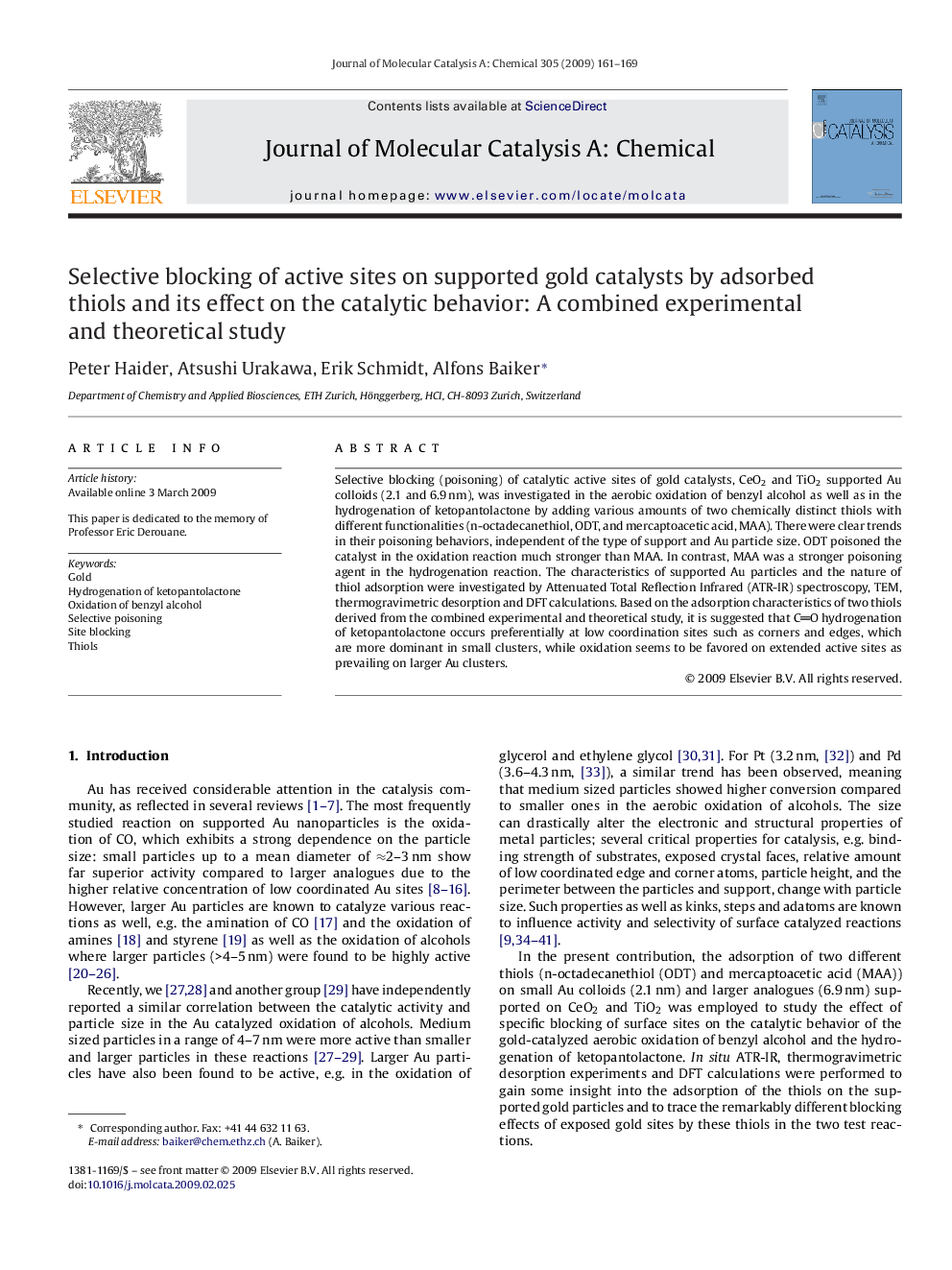| Article ID | Journal | Published Year | Pages | File Type |
|---|---|---|---|---|
| 66991 | Journal of Molecular Catalysis A: Chemical | 2009 | 9 Pages |
Selective blocking (poisoning) of catalytic active sites of gold catalysts, CeO2 and TiO2 supported Au colloids (2.1 and 6.9 nm), was investigated in the aerobic oxidation of benzyl alcohol as well as in the hydrogenation of ketopantolactone by adding various amounts of two chemically distinct thiols with different functionalities (n-octadecanethiol, ODT, and mercaptoacetic acid, MAA). There were clear trends in their poisoning behaviors, independent of the type of support and Au particle size. ODT poisoned the catalyst in the oxidation reaction much stronger than MAA. In contrast, MAA was a stronger poisoning agent in the hydrogenation reaction. The characteristics of supported Au particles and the nature of thiol adsorption were investigated by Attenuated Total Reflection Infrared (ATR-IR) spectroscopy, TEM, thermogravimetric desorption and DFT calculations. Based on the adsorption characteristics of two thiols derived from the combined experimental and theoretical study, it is suggested that CO hydrogenation of ketopantolactone occurs preferentially at low coordination sites such as corners and edges, which are more dominant in small clusters, while oxidation seems to be favored on extended active sites as prevailing on larger Au clusters.
Graphical abstract.Figure optionsDownload full-size imageDownload as PowerPoint slide
